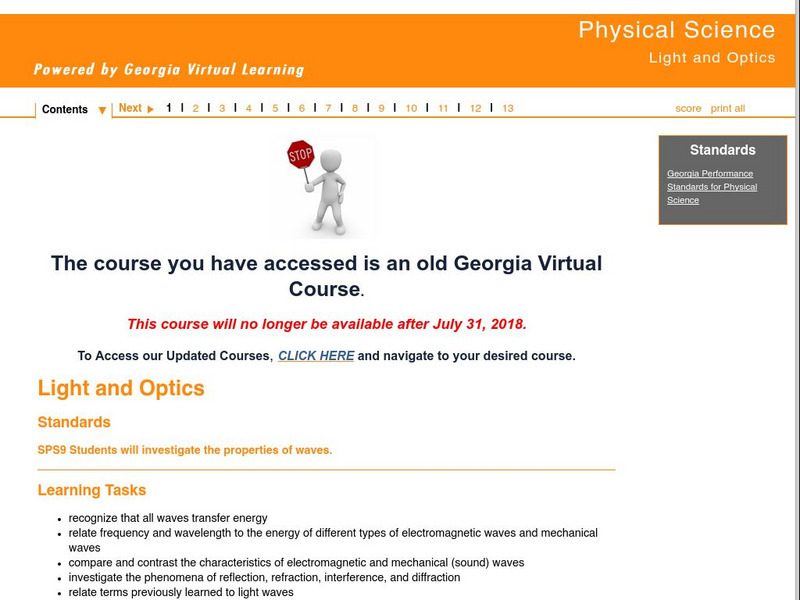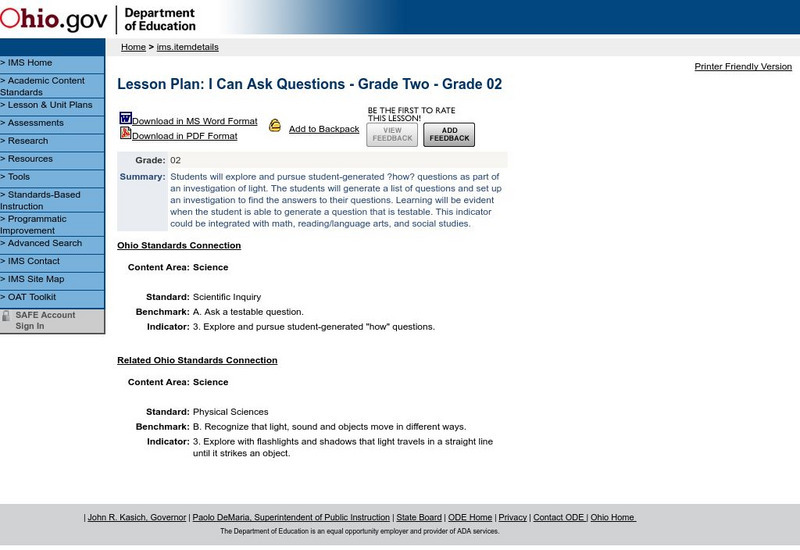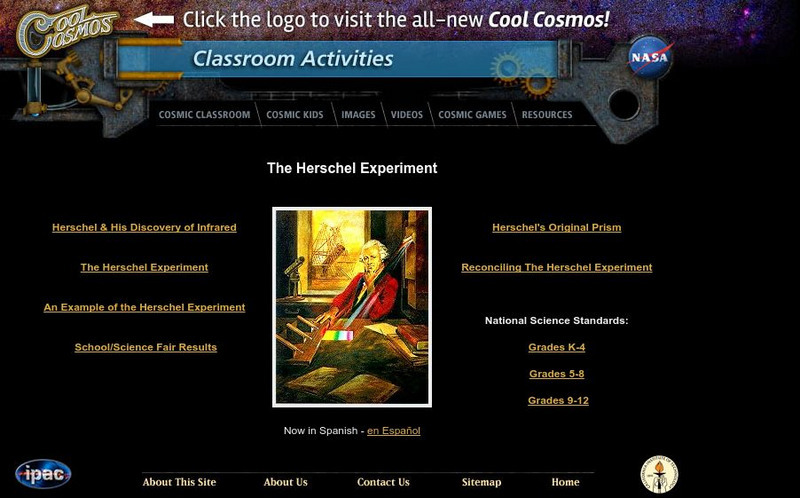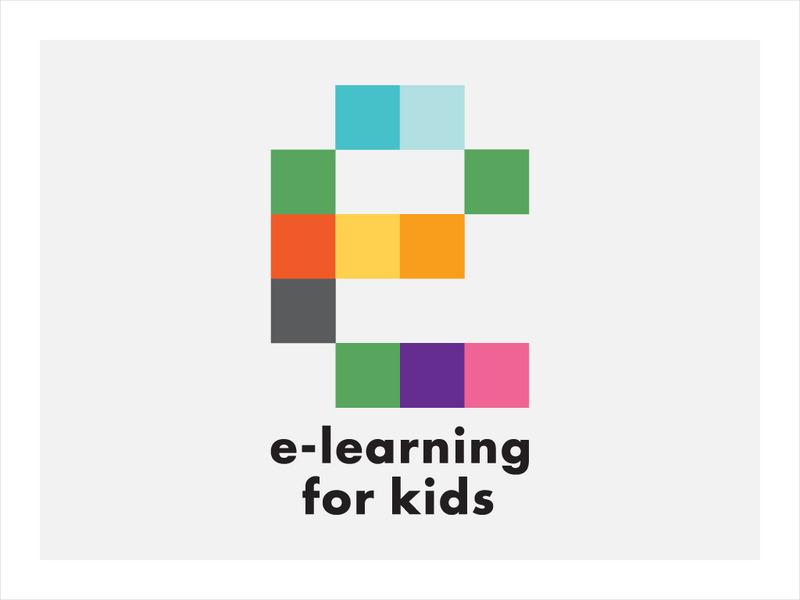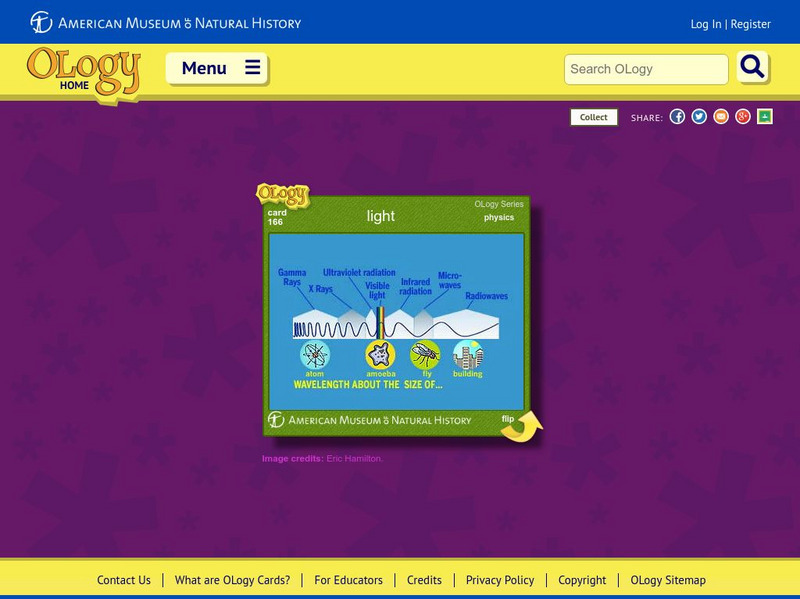Georgia Department of Education
Ga Virtual Learning: Physical Science: Light and Optics
Students will investigate the properties of light waves. They will learn about the different types of electromagnetic waves and mechanical waves, and investigate the phenomena of reflection, refraction, interference, and diffraction.
Massachusetts Institute of Technology
Mit: Open Course Ware: Courses: Physics Ii: Electricity and Magnetism
College-level physics course highlighting electricity and magnetism. This course is divided into several modules including electric fields, magnetic fields, electromagnetic forces, conductors and dielectrics, electromagnetic waves, and...
Science Buddies
Science Buddies: Measuring Light Intensity Using the Inverse Square Law
You've probably heard that compact fluorescent light bulbs are more efficient than incandescent bulbs. More of the electricity they use goes into producing light, and less into producing heat than with incandescent bulbs. How much more...
Estrella Mountain Community College
On Line Biology Book: Photosynthesis
A comprehensive delve into the many facets of photosynthesis. Text is supplemented with effective pictures and graphs. Review questions can be found at the end of the site.
Harvard University
Harvard Smithsonian: Everyday Classroom Tools
The focus of this series of lessons is to engage students in an exploration of the world around them. The emphasis is on inquiry as students learn about the earth, sun, light, shapes and more.
Other
Ohio Dept. Of Education: Lesson Plan: I Can Ask Questions Grade Two
Students will explore sources of light in this instructional activity and generate their own questions for further investigation, then find answers.
Vision Learning
Visionlearning: Physics: Light I: Particle or Wave
Instructional module focusing on light. Discussion includes historical development of particle versus wave theories and the scientific studies leading to the understanding of light waves today. Site also includes an interactive practice...
Libre Text
Libre Texts: Physics: The Ray Model of Light
How is light visible? Examine this source to understand what light is and how it travels. Answer discussion questions and practice problems to better recognize light rays and know their functions.
Globio
Glossopedia: Light
Light is a form of energy. We see it in many different forms all around us. It's the sunlight that pours through your bedroom window and wakes you up. Images and in-depth information on light can all be accessed in this article.
Other
Girl Scouts of the Usa: Lighten Up! Discovering the Science of Light [Pdf]
A 36-page booklet of activities and experiments for exploring the properties of and nature of light. Includes a section on careers in optics. As this is a Girl Scouts booklet, it was created with girls in mind, but would be equally...
Other
Manitoba Education and Training: Physics: Particle and Wave Models of Light
A collection of ideas for teaching students about the nature of light. They learn about the history behind theories of light and the contributions of different scientists. Includes lots of experiments to build their understanding of the...
California Institute of Technology
Cool Cosmos: The Herschel Experiment
This website provides a background on the discoverer of infared light--Sir Frederick William Herschel. A version of the experiment Herschel conducted in the 1800s is provided as well.
E-learning for Kids
E Learning for Kids: Science: Netherlands: How Does Light Travel?
Sara and Finn are finding out how light travels. Join them, and learn the nature of light energy.
Texas Instruments
Texas Instruments: Holt Physics: Brightness of Light
This probeware version of the Skills Practice Lab Brightness of Light from the chapter Light and Reflection uses a light probe to measure the intensity of light at different distances from a light source.
Simon Fraser University
Chem1 Virtual Textbook: The Language of Light
Acting as a subtopic of the General Chemistry Virtual Textbook's section on Atoms and the Periodic Table, this site discusses light in relation to particles and waves. The difference between particles and waves is addressed along with...
Harvard University
Eyes on the Sky, Feet on the Ground: The Earth's Rotation
Plenty of cool activities about the Earth's rotation can be found here, such as tracing shadows, observing shadows during different times of the day, and tracking the sun's path in the sky to understand the rotation of the earth.
Other
Is the Speed of Light Constant?
Using a question and answer format, this page discusses the question: "Is the Speed of Light Constant?" Discusses some of the history and experiments performed with light and the conclusions drawn from those findings.
American Museum of Natural History
American Museum of Natural History: Light O Logy Card
Flip over this interactive OLogy card and start learning bite-size pieces of useful information about light.
Chemistry Collective
Chem Collective: Why Things Have Color
This tutorial demonstrates spectroscopy showing the dispersion of an object's light.
Physics Classroom
The Physics Classroom: Reflection/ray Model of Light: Mirror Portion Required
A tutorial which demonstrates how ray diagrams can be used to determine what portion of a plane mirror must be used in order to view an image.
Physics Aviary
Physics Aviary: Solar System Energy Lab
This lab is designed to have students investigate the relationship between the distance you are from a source of light and the intensity of the light your receive.
Science Struck
Science Struck: How Does Light Travel Through Space and Other Media?
A detailed discussion of the nature of light, how it can travel through a vacuum, and how the speed of light is affected when light travels through a medium.
Florida State University
Florida State University: Science, Optics & You: Anders Jons Angstrom
Biography of Anders Jonas Angstrom (1814-1874), a Swedish physicist who pioneered the field of spectroscopy. He was also well known for his work in mathematics and astronomy.
PBS
Pbs Learning Media: Let's Explore Light: Lesson Plan
Young scholars will use observations and evidence to describe that objects can only be seen if they are illuminated by an external light source or give off their own light. Media is used to supplement student observations and encourage...


